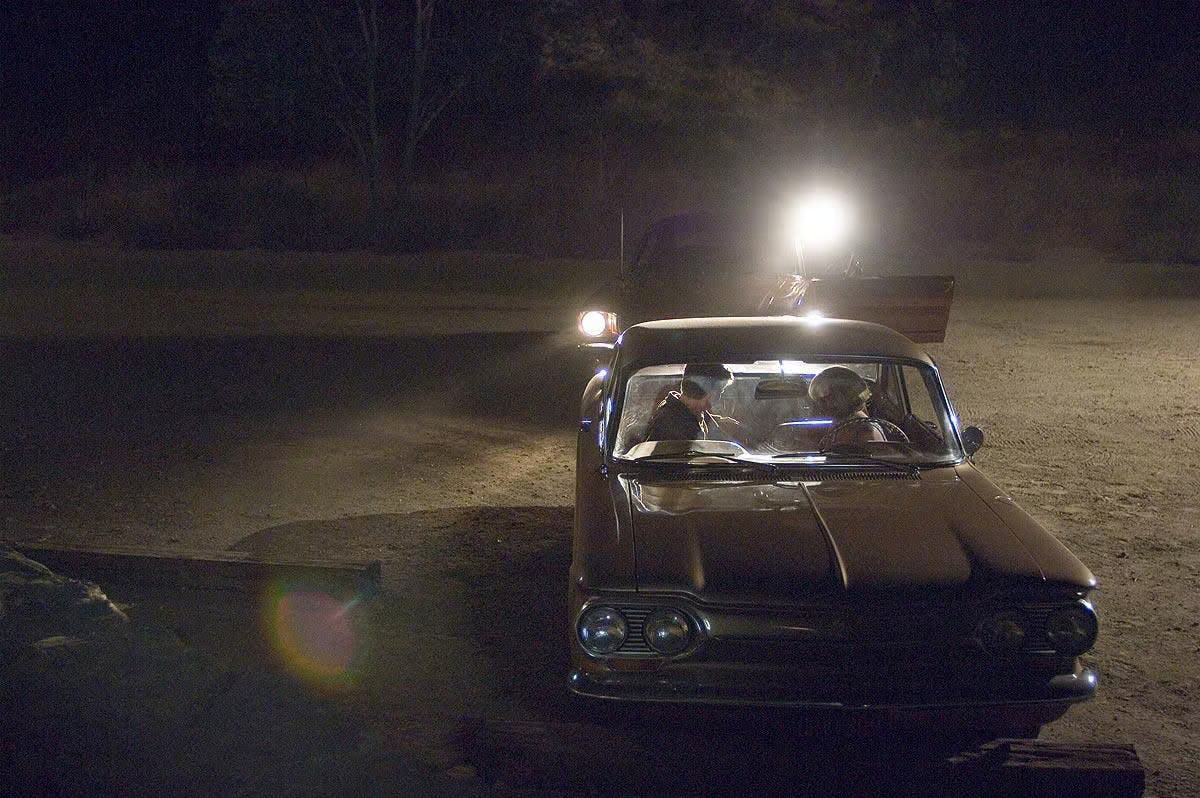
It was the ultimate cold case. In the late 1960s and early 1970s, a serial killer haunted the San Francisco Bay Area, taunting the public with ciphers and letters mailed to regional newspapers. He threatened killing sprees and bombings if the letters were not printed. He was never caught, and his identity remains unknown.
David Fincher’s Zodiac brings us no closer to resolution. Chronicling the years-long efforts of a crime reporter (Robert Downey Jr.), a detective (Mark Ruffalo), and a political cartoonist (Jake Gyllenhaal) to solve the case, it’s as much a study in the all-consuming nature of obsession as it is an oppressive deluge of detail — of codes and ciphers, false leads and partial theories, dead ends and blind alleys. All its forensic evidence accrues and overwhelms, casting the world in shadow without bringing truth to light.
In this respect, Zodiac still functions, 17 years after its initial theatrical release, as a bracing corrective to our cultural obsession with “true crime,” a genre that implicitly distorts the truth about crime by imposing sensational narrative frames around murder investigations that are more unsatisfying, murky, and mundane than would lend themselves to popular entertainment. Instead, with its hypnotically methodical focus on three men who tried and failed to catch the killer — and on the maddeningly inconclusive wealth of information they obtained — Fincher’s film gazes deeply into the abyss to evoke what, at the center of the case, remains unknowable.
Zodiac, recently upgraded into a 4K release by Paramount, thus dwells in all kinds of darkness — literal, psychological, intellectual, metaphysical — as it peers into the dimly lit corridors of the past to exhume this cold case. Across all his films, Fincher has become known for a potent visual style in which low lighting, point-precise detail, and complementary, desaturated color schemes mirror the psychological intensity of his storytelling, establishing a visceral naturalism.
Though a film like Zodiac is visually dark and haunting, it’s also far from impenetrable. Instead, filming an endless night with striking clarity, Fincher compels audiences to stare into the darkness, where characters and their actions are barely perceptible but the truth hovers tantalizingly beyond our field of vision.
In this way, he illuminates the distance between seeing and understanding. If Zodiac is governed by any overriding truth, it concerns our inability (as citizens of the world, students of history, and storytellers trying to make sense of both) to collapse that distance into a definitive truth. This idea is sustained with marvelous formal discipline by the director who, in league with editor Angus Wall, compresses time and space as the investigation seeps through years of his characters’ lives, their single-minded pursuit of the Zodiac lending the film a brutally linear narrative progression.

Zodiac was primarily shot in 1080p HD (4:4:4) on the Thomson Viper FilmStream Camera; it marked Fincher’s first time shooting digitally to such an extent — Zodiac holds the distinction of being the first digital feature from any major studio to be shot and produced without using videotape or compression in its capture or editing. (The stylized, slow-motion murder scenes that open Zodiac, however, were shot on 35mm photochemical film.)
Working almost fully digitally afforded Fincher considerable control in post-production. From recreating San Francisco using CGI to digitally adding hair to Gyllenhaal’s knuckles, he took full advantage. That the film was Fincher’s first period piece feels especially relevant in assessing the construction and clarity of Harris Savides’ digital video photography, the low-light legibility of which exists in ironic contrast to the abiding mystery of the case. Even with the vantage of digital technology allowing us to stare into the darkness more deeply and intensely than film cameras ever allowed, we never see quite enough to draw firm conclusions.

The new three-disc release also includes Fincher’s director’s cut on Blu-Ray and an additional disc of special features (all of which are ported over from the film’s previous Blu-Ray release), but it’s most notable for its 4K transfer. This features improvements in the sharpness and definition of the image and adjustments to color saturation and contrast that push the film’s palette toward an even more naturalistic and intricately detailed image, without betraying Fincher’s intended visual tone, in all its glowering textural ambience.
Sourced from a new 4K master, the new release of the film’s theatrical version, with Dolby Vision HDR and DTS-HD 5.1 audio, is particularly exciting in its upgrade of the color grade. This release benefits from BD-100 encoding (as opposed to BD-50 on the Blu-Ray); given that the recorded resolution in 1080p is about a quarter of native 4K already, improvements to image detail are subtle but striking, with slightly more pronounced gradations of shadow and inkier black levels enhancing the image’s depth and dimension. The adjustments are most welcome in how they showcase Savides’ night photography, which has never looked quite so textured and otherworldly, at once so tactile and ineluctable, as it does here.

Paramount’s earlier Blu-Ray release of Zodiac, it should be said, remains a breathtaking 1080p transfer of the film, delivering formidable detail, depth, and clarity of image straight from the source. There’s little argument a 4K upgrade like Zodiac, which was shot digitally, ultimately yields less transformative results than we can expect from the announced 4K transfers of Se7en, Panic Room, and Fight Club, all shot on film, which Fincher is reportedly overseeing.
And yet Zodiac remains a high point in Fincher’s filmography, and it’s presented beautifully in this release, ensuring his ferocious attention to detail and precise visual style is on full display, in reflection of the darkness that his characters push forward and through in a fruitless search for answers. Coldly, steadily, and brilliantly exploring the obsessive impulses that connect serial killers, journalists, and criminal investigators, Zodiac still looms large as a film about the existential totality of unsolved mysteries. Fittingly, given this, it has lost none of its power to entice, confound, and compel.
Zodiac is now available on 4K UHD Blu-Ray, from Paramount.







